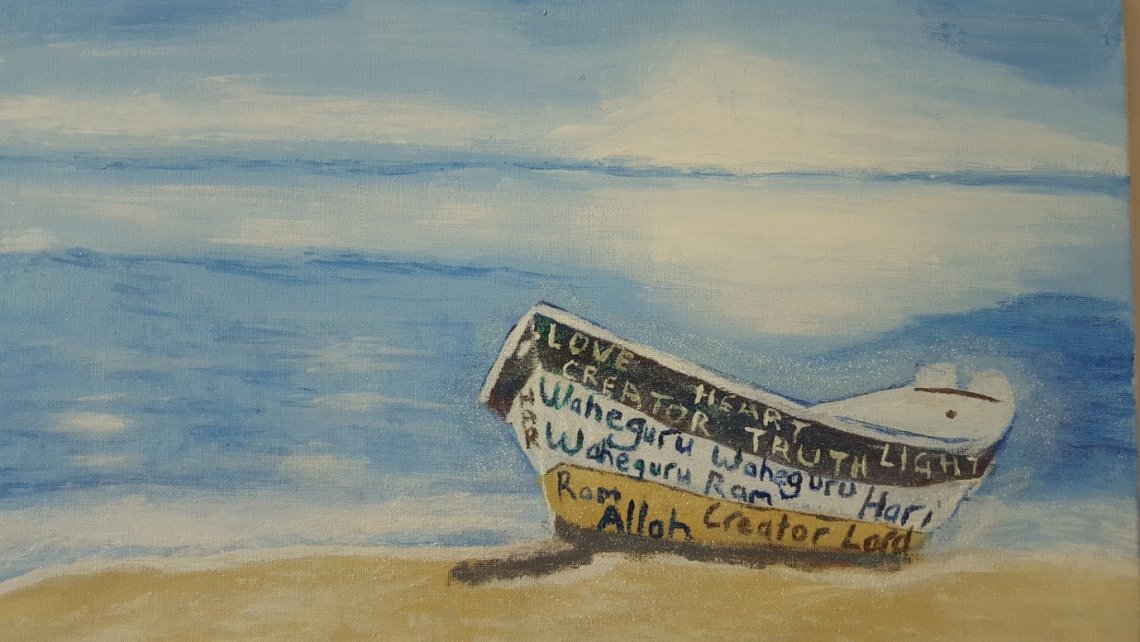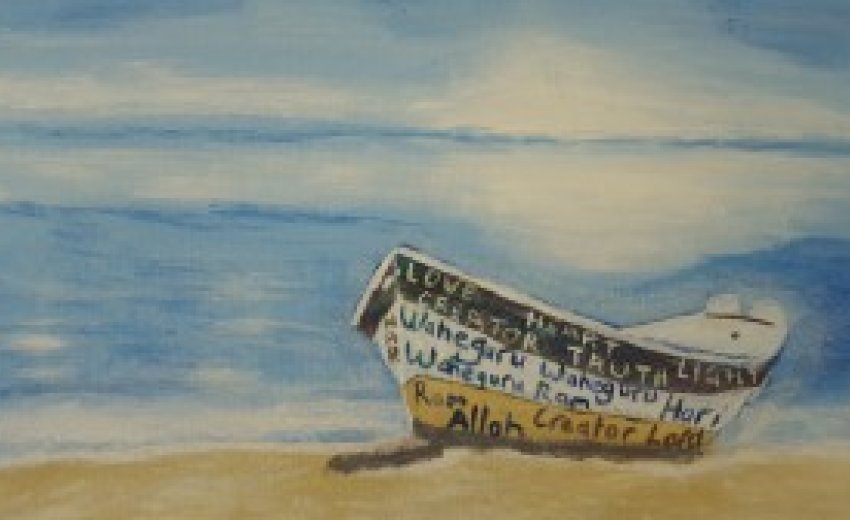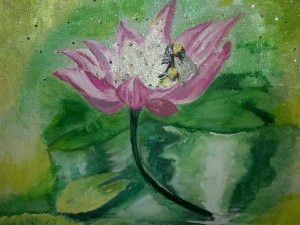What is Sikh art? Is it artwork by Sikhs? And who are the Sikhs? Do they have to be born into SIkhi and have grown up in the Punjabi culture to be Sikhs, or can they be Sikhs by word, daily practice, and adherence to the teachings of Sikhi? Can someone of any nationality who has a vague interest in Punjabi culture and art be called a Sikh artist? Also, to what extent do we define Sikh art? Does it have to be in established galleries by commissioned artists to be classified as Sikh art, or can anyone whose heart and soul exists in Sikhi present Sikh art? These questions are important because we are influenced by our environment, and our experience of our environment influences our thoughts.
 Paintings by Sobha Singh fill the homes of the majority of Sikhs. These paintings are not actual portraits of the Sikh Gurus. Instead, they are images of what the Gurus may have looked like based on one man's imagination. These paintings present a very sublime image of the Gurus in mediation or trance.
Paintings by Sobha Singh fill the homes of the majority of Sikhs. These paintings are not actual portraits of the Sikh Gurus. Instead, they are images of what the Gurus may have looked like based on one man's imagination. These paintings present a very sublime image of the Gurus in mediation or trance.
There are some Sikhs who bow to the paintings, but to whom are we bowing when we bow to a picture? In the end, they are one man's vision or imagination. The real images are not to be seen. The Gurus could have easily commissioned paintings of themselves, but they did not. The main reason for this was that this would go against the very essence of Sikh teachings. The Gurus are not to be worshipped as Gods. It is very clear that our Gurus did not want to be painted, so why have we done it and why do we still do it? These paintings serve us. Paintings of Guru Nanak underneath a tree with Marydana and paintings of Guru Gobind Singh giving Amrit are a reminder of what life was like hundreds of years ago. Millions see these images, but how are we influenced by them? Do they influence us at all? Have we been using the visual images as a substitute for reading and experiencing the teachings ourselves? Do they give us the same bliss as reading Gurbani? The answer is 'No'; they can never do this. We still have to make the effort ourselves. Do they provide moral assurance and comfort? Possibly. Are they nice to look at? Of course, there is no doubt about this.
Personally, I too am guilty of painting Guru Nanak Dev Ji when I was 17 years old. I have kept this painting with me all my life; it is still in my living room. I feel close to and protected by the image, and, even now, I am reluctant to take it down. I have become attached to it because it is mine, even though I know that we cover and protect Jap JI because it has a body and life of it's own. We protect the written word of Guru Nanak because it is a living body of our Guru. For me, my painting represents my initial attraction to Jap Ji and the words of Guru Nanak. The painting serves a purpose in the family, reminding us of who we belong to and whose teachings we follow.
There are very few Gurdwaras who do not have paintings of Gurus or historical Sikh events on the walls of the Darbar Sahib or Langar Hall. To some extent they serve a useful purpose because they act as visual reminders of why we come to the Gurdwara. We need this as a community because the Langar Hall and the Darbar Shahib can be filled with other distractions.
There is a section of professional Sikhs who can easily memorise and quote sections of Gurbani and apply these to situations. They have their own understanding of the Gurus' teachings and interpretations of Gurbani. The Sikh Diaspora means that no longer do Sikh communities only exist in rural areas. So, do we really need to have another person's vision of what our Gurus looked like? The short answer is 'No'. The longer answer is that we should read and apply the teachings of our Gurus to our lives. Only in that way can we carry the light of our living Guru with us. That is the only way; everything else is shimmering across the surface and being lazy, bowing to another man's vision and never tasting the core and experiencing the pleasure for oneself.
As a community, the Sikh population is relatively small and declining due to female feoticide and genocide. The factors pushing people away from the core teachings outweigh the factors pulling people into Sikhi. Historically, the Sikhs were a largely rural population who were uplifted by poetry and art, so that it is entrenched into their being. It is this divine poetry that has been the single defining source of success for Sikh communities around the world. Many Sikhs originally came to Sikhi to escape the harsh caste system, and many had origins in rural Punjab, where women's educational opportunities were limited. But, spiritual education that was passed via singing shabad's and reading scriptures was abundant. This education is, to some extent, being lost as real life communication is being replaced by online communication. Online conversations are never going to replace real life communication and learning; they can only imitate them. Just as we cannot imitate reading and learning about Sikhi - either we do it or we do not-there is no place for imitation.
In the end, there is no imitation in real life; we have to jump on the boat and chant His Name ourselves and serve Him ourselves. The time has come in this life to realise that there is no imitation. In Sikhi, only by remembering and chanting the name of your creator can you cross the ocean. The Name is the boat that will take you on your journey in this life and the next.
 |
| Painting by Gurmit Kaur |






